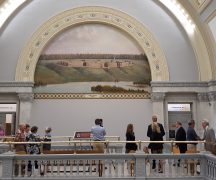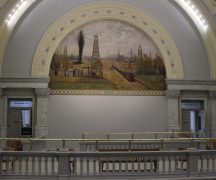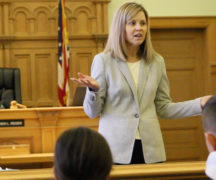By JAN LARSON McLAUGHLIN
BG Independent News
Two centuries ago, Native Americans in this region were too smart to settle in the Great Black Swamp.
But white settlers from the East were desperate to find their own pieces of land to farm and raise their families. And sometimes they put down roots in Wood County simply because they get stuck in the mud and could go no further.
Their sweat and stubbornness – along with 3,000 miles of ditches to drain the swamp – were celebrated Saturday evening in the atrium at the Wood County Courthouse Complex in Bowling Green.
Returning to the swamp for the celebration was John Quinn, who taught history at Bowling Green High School for 30 years and served as mayor from 2000 to 2011.
“History is people facing problems,” Quinn said to the crowd filling the atrium. And “Life in a Swamp” offered plenty of problems.
The Ice Age, with its grinding and chiseling action, smoothed Wood County into a bowl of bedrock and hard clay – perfect for holding water but making it nearly impossible to settle.
“It was the most foreboding place in Ohio,” Quinn said.
Passing through the swamp was bad enough, but trying to make a home here was downright depressing with the daily battles against mud, mosquitoes and disease.
Quinn referred to a book written about those struggles, “At the Edge of the Orchard,” which is set in Wood County and tells the story of the Goodenough family. Quinn’s wife, Jane, read portions of the book from the perspective of Sarah Goodenough.
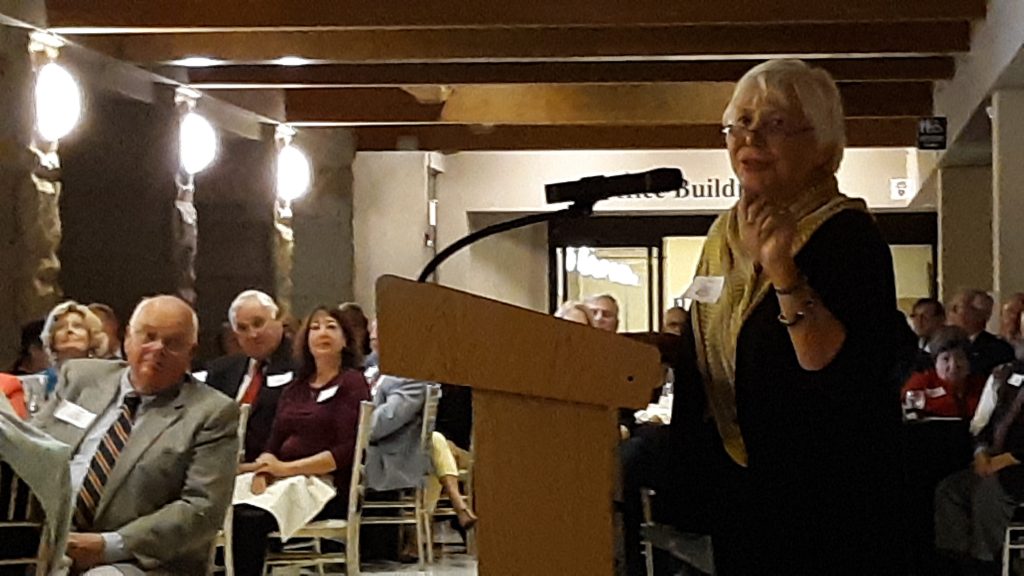
“It ain’t a name that draws you in,” she said of the Great Black Swamp. But like others, her family settled here when their wagon got stuck and they could go no further.
She told of the constant struggle to clear trees, and of clothes being so caked with thick mud that they stood up by themselves when dried.
Mud roads made transportation painfully slow. “They were nearly impassable much of the year,” John Quinn said.
“Indians pretty much avoided the Black Swamp like the plague,” he said.
Ditches became a necessity in Wood County – eventually resulting in 3,000 miles of the open waterways that still drain fields today.
Quinn recalled a student years ago asking a county commissioner to describe his job. The commissioner replied, “everyone is entitled to good drainage,” Quinn said.
Slowly the swamp was settled. Canals were constructed, canoes were a vital mode of transportation, and in the mid 1800s a plank toll road was built.
Then the railroads came and replaced the canals, Quinn said.
“They became the lifeblood, not only of the larger communities, but also the villages,” he said.
Then came the automobile, which turned some thriving towns along train tracks into ghost towns.
“All of the villages suffered from the automobile,” Quinn said.
Oil, natural gas and glass manufacturing started booming in Wood County – challenging the county’s strong agricultural status.
“The door was now open to commerce,” he said.
That rivalry between agriculture and commerce is pictured in the stone carving on the east end of the county courthouse. Lady Justice appears with a “kind hand” resting gently on agriculture, and a fist pushing at commerce.
Though agriculture remains strong in Wood County, the arrival of oil, gas, glass and railroads resulted in the end of the Jeffersonian era of the Great Black Swamp.
And despite all advancements, the swamp still reigns – frequently flooding the region.
“Life in the swamp will be with us forever,” Quinn said.
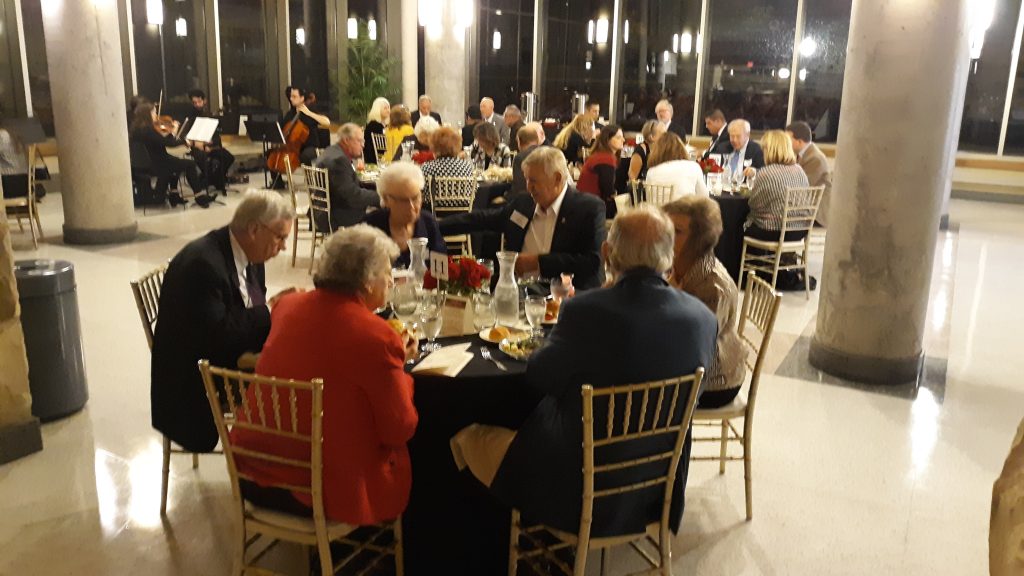
Saturday’s gala recognizing Wood County’s upcoming bicentennial in 2020 was the first of many events planned to “celebrate the county that we call home,” Wood County Common Pleas Judge Matt Reger said.
Other events include such activities as:
- I Love Wood County Scavenger Hunt, on Feb. 8 from 9 a.m. to 3 p.m., starting at the Wood County District Public Library.
- Wood County 200 Walking Tour, on June 6, at 10 a.m., starting at the library’s Carter House.
- Anecdotes & Obits: Exploring Wood County History in the Newspaper, on July 21, at the library.
- Wood County Haunted History, on Oct. 27, at 6:30 p.m., in the library.
- Photography exhibit of Wood County townships, opening Feb. 1 at the Wood County Historical Center & Museum.
- Living History Day of “Wood County’s Firsts” on Aug. 23 at the historical center.
- Wood County Friday Folklore Tour on Oct. 23, at the historical center.
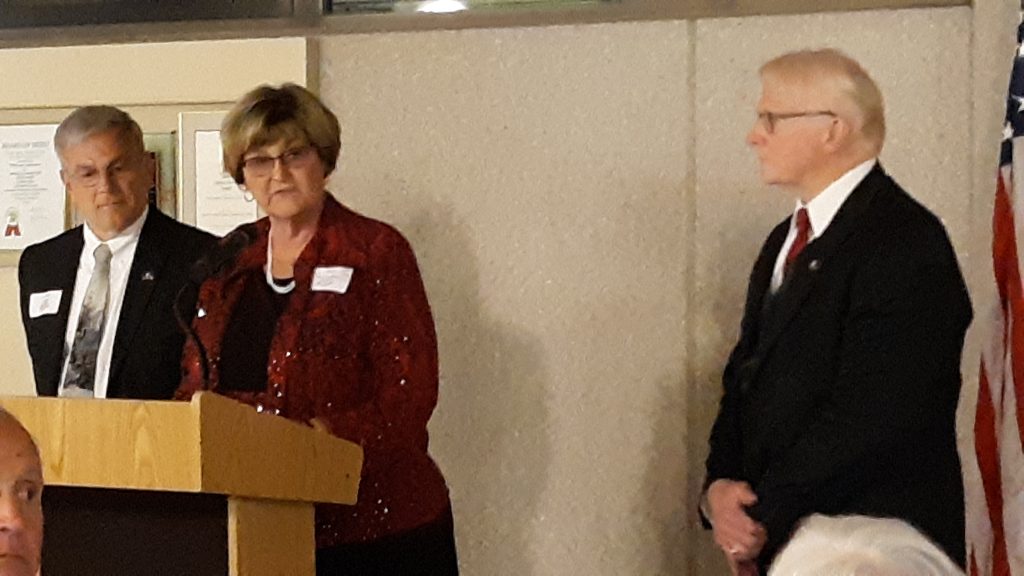
The county commissioners, Doris Herringshaw, Ted Bowlus and Craig LaHote also mentioned the opportunity for citizens to donate to the new Wood County Veterans Memorial being constructed on the grounds of the county courthouse. The memorial is expected to cost $400,000, and will recognize local veterans from seven wars.
Wood County Probate and Juvenile Court Judge Dave Woessner also noted the upcoming 125th anniversary of the county courthouse. People come to the courthouse to start a new life – getting marriage licenses – to seek justice, for events such as Saturday’s gala, or even to view the Peregrine falcons roosting in the clock tower.
“The Wood County Courthouse stands as an imposing and significant structure for all of us,” Woessner said.


